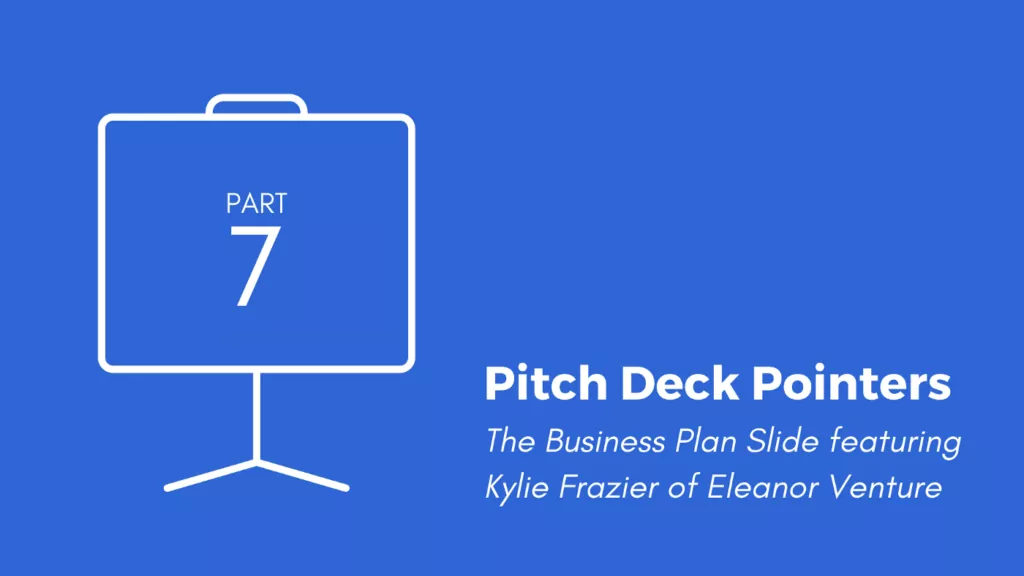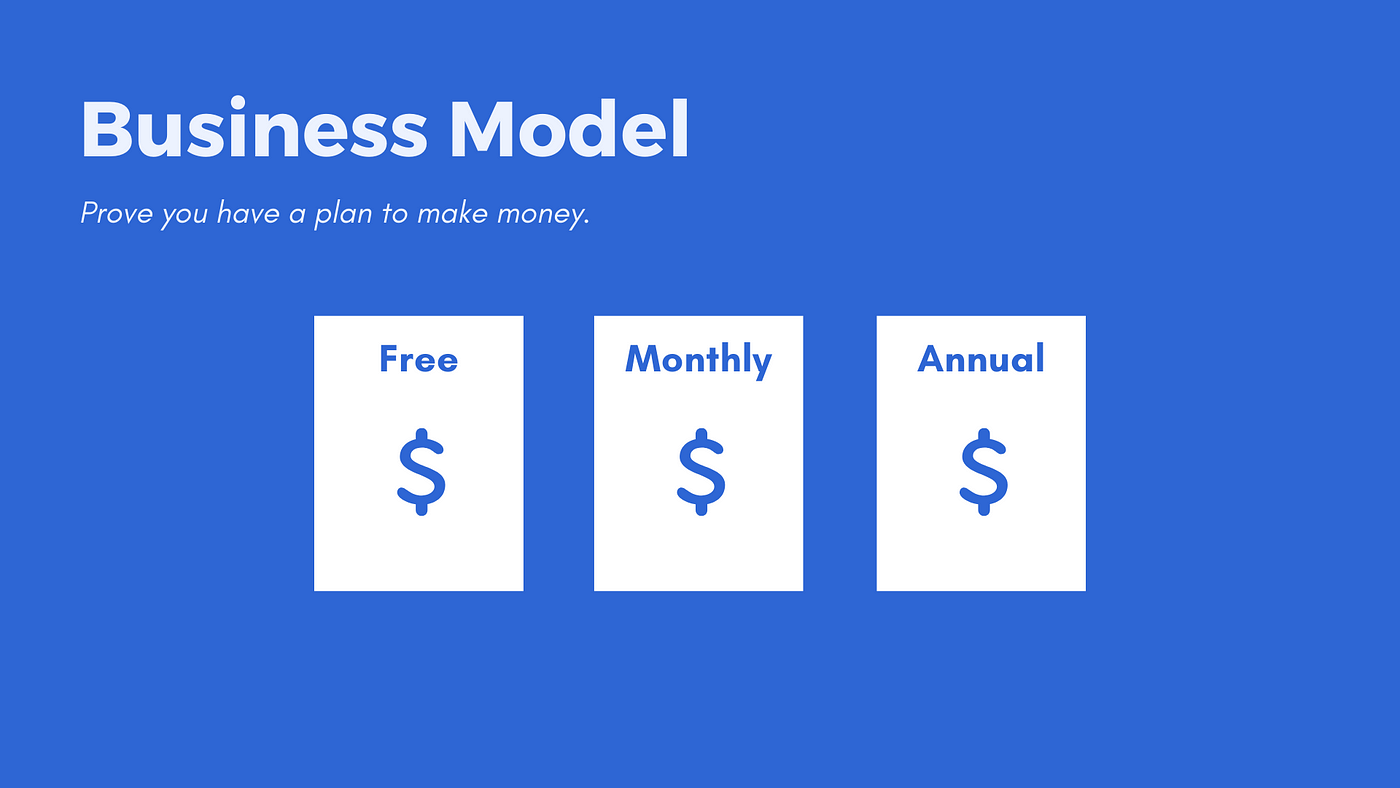Pitch Deck Pointers Part 7: The Business Model Slide
Kylie Frazer of Eleanor Venture is stepping in to tell founders exactly what investors are looking for on the business plan slide of the pitch deck.

Hopefully, you’ve been following along with our series: Pitch Deck Pointers. It’s our newest resource aimed at achieving the Innovation Bay mission of supporting founders along their journey from idea to IPO. We tapped our VC friends to help us pull together a guide to composing an investor-friendly pitch deck. If you’ve missed our previous instalments check them out:
- The Intro Slide featuring Sian Priest of Innovation Bay
- The Problem Slide featuring Emily Close of AirTree Ventures
- The Solution Slide featuring Hannah Field of Tempus Partners
- The Market Slide featuring Alon Greenspan of Jelix Ventures
- The Unfair Advantage Slide featuring Benjamin Chong of Right Click Capital
- The Competition Slide featuring Hugh Bickerstaff of Investible
Now, Kylie Frazer, co-founder and partner at Eleanor Venture, an investment syndicate focused on early-stage tech companies, is stepping in to share what she looks for on the business plan slide.
Meet the VC: Kylie Frazer of Eleanor Venture

I’m Kylie Frazer from Eleanor Venture and we syndicate angels into seed rounds. I spend my days looking for early-stage companies that can tell a story that appeals to both the hearts and minds of investors.
The Business Model Slide

The purpose of the business model slide and why it’s important to investors:
The business model slide shows how you make money. Investors need to be confident that the business model (or a future iteration of it) will work and you will make money. –KF
Common mistakes made on the business model slide:
- Not showing the money! “We are about users, not revenue” only works in the short term. How will you make money, even if you are not charging yet?
- Including insignificant revenue sources (looking at you, affiliate marketing and embedded ad revenue — although, for some businesses of course, these may be core revenue).
- Not getting granular in the unit economics. What does one unit cost? What is the margin? Who pays? Keep it simple. Don’t include complicated projections.
- In marketplace models, not explaining the margin made by each side of the marketplace.
- For subscription products, not including the extent or timing of the price (eg $17 per user per month). –KF
Top pitch tips:
My top tip for founders is to create a sense of urgency. Why is your solution required now? Good timing is as important as any other factor in business success.
Also, a personal bugbear of mine is downplaying competitors. Everyone has competitors. If a deck says ‘we have no competitors’ I think you are probably either (a) a little cocky or (b) more than a little naive. Either way, it gives me an excuse for a quick no. I actually get more excited when founders list slightly left-field companies as competitors — it shows they are thinking expansively about the business. –KF
Next up:
- Part 8. The Traction Slide featuring Dan Gavel of Black Sheep Capital
- Part 9. The Team Slide featuring Tip Piumsomboon of Blackbird Ventures
- Part 10. The Ask Slide featuring Georgina Turner of Tidal Ventures
Disclaimer: At the end of the day, this series is just a guide and should not be taken as gospel. Just as every business is unique, every slide deck should be unique. While the general order and number of slides we’ll use in the series is a good jumping-off point, perhaps a few more or fewer slides or a completely different sequence would better fit your company’s story.